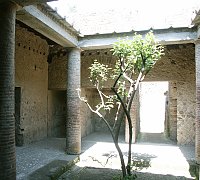
|

|

|
| |
|

|
The entrance |
| |
|
Wine Cellar and wine press |
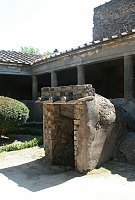
|

|
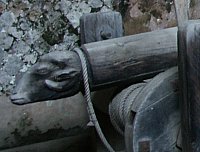
|
| |
|
Wall Paintings depicting a ritual, probably a rite in the Dionysian MysteriesThis is the room from which the villa received its name. These paintings are in a room assumed to be the place of initiation into this "religion." This room is about 15 by 25 feet with paintings around the room on a so-called Pompeian red background. Twenty-nine figures, almost life-size, depict in apparent chronological order the events in this initiation ritual. Unfortunately these paintings are in very low light and one is not allowed to enter the room, which radically alters the viewing angles and inhibits a clear picture of the narrative. |
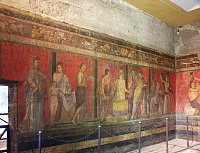
|
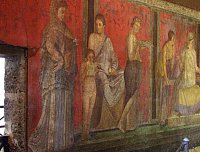
|
The entrance wall |
| |
|
This wall depicts the initiate, a young naked man reading (perhaps portions of the rite), and at the far end a group of satyrs, mythological characters who play musical instruments--the aging Silenus plays a lyre while a young satyr plays the pan pies. Another suckles a goat.
|

|
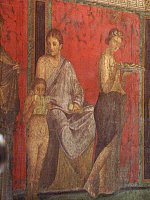
|
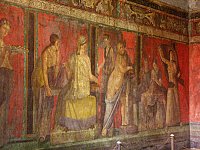
|
| |
|
The central wallOn the left, a figure who resembles Silenus holds a bowl while a young satyr looks into it. Another young satyr holds a theatrical mask. |

|

|
| |
|
|
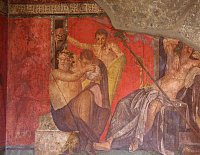
|

|
At the center of the frescoes is the figure of Dionysus, an identification scholars agree about. His mother Semele or Ariadne (?) is to right. It is believed that Dionysus (or Bacchus for the Romans) was important to childbirth and fertility. |
| |
|
|
Far right of central wall and the cornerAround the corner (very difficult to see) is the initiate who has been whipped--a way of expelling the evil and cleansing her for marriage?? The winged figure at the far right is presumably the one who has (or will) flail her. |
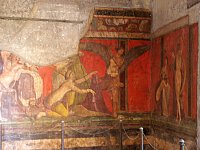
|
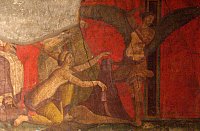
|
| |
|
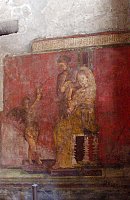
|
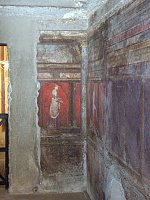
|
Left: This scene occurs at the end of the ritual when the initiate or bride prepares for the divine "marriage." An Eros figure holds a mirror. |


 Click here to return to index of art historical sites.
Click here to return to index of art historical sites.
 Click here to return to index of artists and architects.
Click here to return to index of artists and architects.
 Click here to return to chronological index.
Click here to return to chronological index.
 Click here to see the home page of Bluffton University.
Click here to see the home page of Bluffton University.

